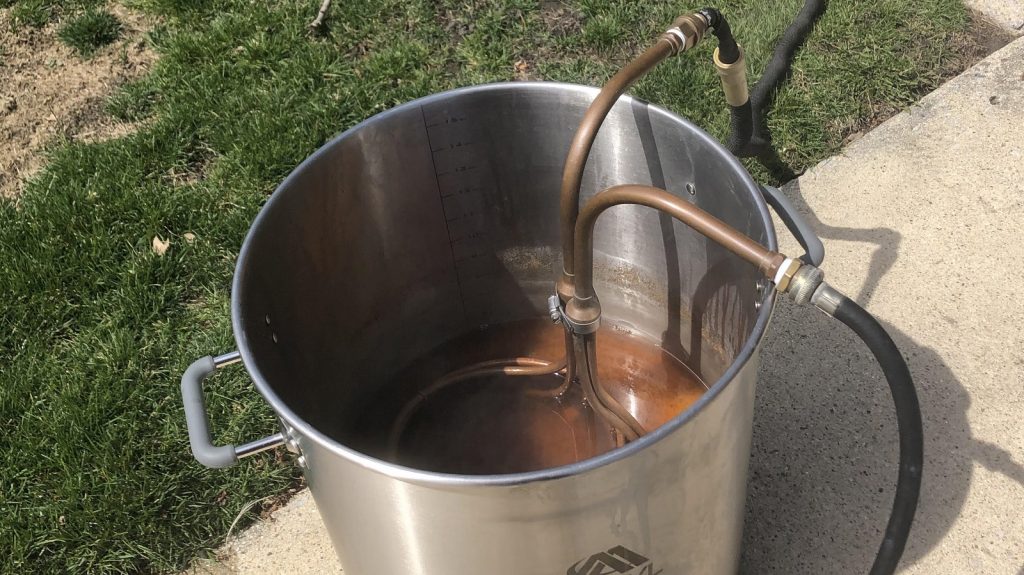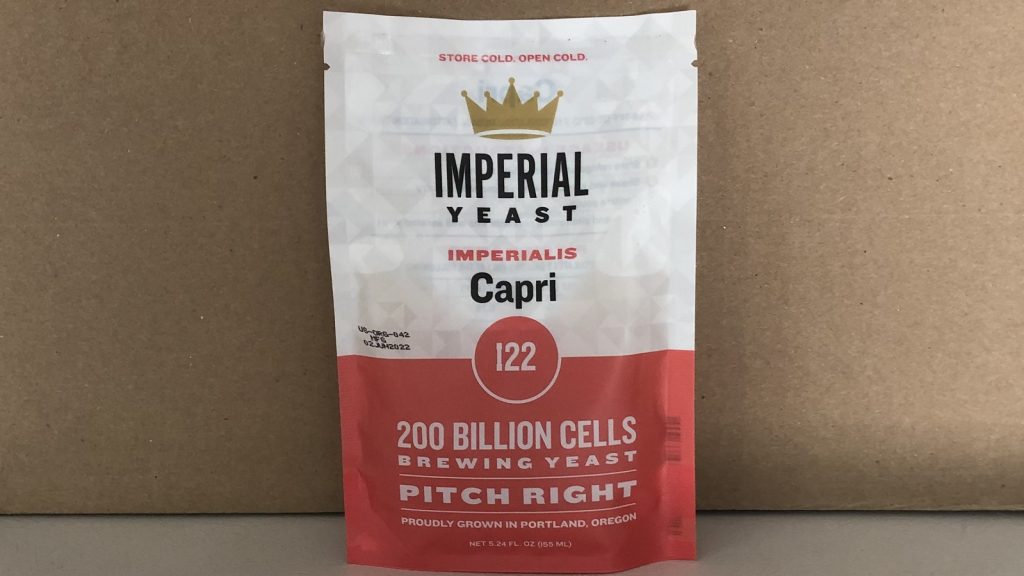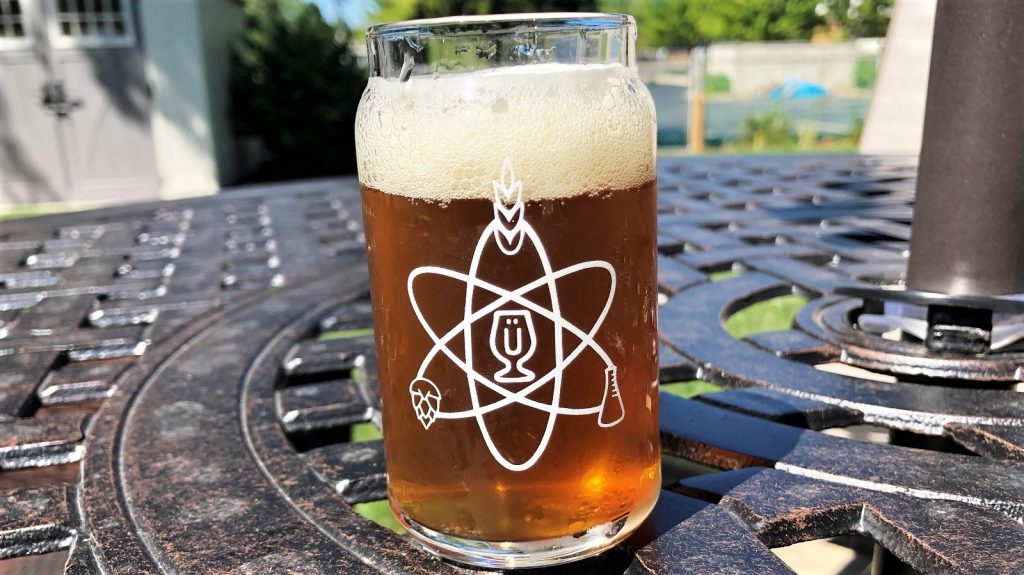Author: Steve Thanos
My family has a summertime tradition of heading to Put-in-Bay Island just outside of Sandusky, Ohio, for a fun-packed week of cruising golf carts, grubbing at great restaurants, and letting the kids run wild and free. This is also a time when the adults take a load off and enjoy some of the finer things in life, like tasty beer!
This year, wanting to provide members of my extended family with something special, I decided to bring a beer made specifically for this vacation. While a clean lager would have fit the bill, I felt something with a bit more oomph would yield more appreciation and settled on brewing a Double IPA that was decidedly balanced, which I feel is paramount for the style.
As a Midwesterner, I still enjoy hoppy beers with malt character and designed the malt bill around this preference. For the hops, I relied heavily on a couple newer varieties that I had no previous experience with, the descriptions of which sounded like they’d work great in an IPA. This was also my first time using Imperial Yeast I22 Capri, a unique hybrid of A38 Juice and A43 Loki that’s said to impart beer with juicy tropical fruit characteristics. Seeing as this recipe was designed around a number of ingredients I was unfamiliar with, I figured even if it didn’t turn out as expected, at least my intentions were good.
| Making Good Intentions Double IPA |
Staying consistent with my Midwestern roots, I designed this recipe to possess a decent malt backbone, which was achieved with the use of a couple Sugar Creek Malts.
Good Intentions Double IPA
Recipe Details
| Batch Size | Boil Time | IBU | SRM | Est. OG | Est. FG | ABV |
|---|---|---|---|---|---|---|
| 5 gal | 60 min | 90.3 | 8.3 SRM | 1.083 | 1.011 | 9.45 % |
| Actuals | 1.083 | 1.011 | 9.45 % | |||
Fermentables
| Name | Amount | % |
|---|---|---|
| Ye Olde Pale Ale | 13.312 lbs | 87.65 |
| Munich | 1 lbs | 6.58 |
| Caramel Malt 40L | 8 oz | 3.29 |
| Carapils | 6 oz | 2.47 |
Hops
| Name | Amount | Time | Use | Form | Alpha % |
|---|---|---|---|---|---|
| Simcoe | 28 g | 60 min | Boil | Pellet | 13 |
| Monroe | 56 g | 30 min | Boil | Pellet | 3.4 |
| Experimental: Genghis | 35 g | 10 min | Boil | Pellet | 11.1 |
| Experimental: Genghis | 35 g | 5 min | Boil | Pellet | 11.1 |
| Experimental: Genghis | 56 g | 15 min | Aroma | Pellet | 11.1 |
| Experimental: Genghis | 112 g | 5 days | Dry Hop | Pellet | 11.1 |
Yeast
| Name | Lab | Attenuation | Temperature |
|---|---|---|---|
| Capri (I22) | Imperial Yeast | 77% | 32°F - 32°F |
Notes
| Water Profile: Ca 125 | Mg 20 | Na 8 | SO4 310 | Cl 56 |
Download
| Download this recipe's BeerXML file |
After collecting the full volume of filtered water and adjusting it to my desired profile, I lit the flame under the kettle then proceeded to weigh out and mill the grain.
Once the water was adequately heated, I incorporated the grains then checked to make sure it was at my target mash temperature.
While the mash was resting, I prepared the kettle hop additions.
Once the 60 minute mash was complete, I removed the grains then boiled the wort for 60 minutes before rapidly chilling it with my JaDeD Brewing Hydra IC.
Refractometer readings showed the wort was at my target 1.083 OG.

After transferring the chilled wort to a fermenter, I placed it in my chamber for a couple hours to finish chilling to my desired fermentation temperature of 66°F/19°C, at which point I pitched a pouch of Imperial Yeast I22 Capri.
At 4 days into fermentation, I added the dry hops then left the beer for another 10 days before taking a hydrometer measurement confirming FG had been reached.

At this point, I cold crashed the beer to 36°F/2°C and left it for 1 more week before pressure transferring it to a sanitized keg. The filled keg was placed in my fridge and left to condition for a week before it was ready to head out with me on vacation!
| IMPRESSIONS |
In this day and age, Double IPA is typically either very pale and lacking in malt complexity or hazy to the point of being opaque with an emphasis on “juicy.” While I enjoy both, my Midwestern palate still prefers a solid malt backbone, as I feel it helps to balance the hop pungency and bitterness.
Good Intentions Double IPA was designed specifically with the idea of balance in mind, my goal being to create a strong beer where the malt character was in harmony with the hops, and I feel I accomplished just that. The toast and biscuit malt flavors weren’t too rich and wonderfully complimented the citrus and pine hop notes, all of which was brought beautifully together by the uniquely flavorful fermentation character of Imperial Yeast I22 Capri. Moreover, brewed as a beer to share with family while on vacation, I was happy to learn that Good Intentions was well received by many!
I’ve brewed many batches of Double IPA over the years, many of which have been lost to annals of time, but such will not be the case with Good Intentions. I might make minor tweaks to the hop schedule in the future, but I feel like the relatively complex malt bill combined with the fruity I22 Capri yeast really made this beer shine. While this recipe may not be the ticket for everyone, I trust those who enjoy a balanced Double IPA will enjoy it just as much as my family and I did.
If you have thoughts about this recipe or experience making something similar, please feel free to share in the comments section below!
Support Brülosophy In Style!
All designs are available in various colors and sizes on Amazon!
Follow Brülosophy on:
FACEBOOK | TWITTER | INSTAGRAM
If you enjoy this stuff and feel compelled to support Brulosophy.com, please check out the Support page for details on how you can very easily do so. Thanks!



















4 thoughts on “Brü It Yourself | Good Intentions Double IPA”
Would have guessed at your OG of 1.083 that a yeast starter would have been a good plan pitching only one package of Imperial yeast. Do you do yeast cell calculations?
I usually don’t make yeast starters. The Capri yeast I used was extremely fresh and my fermentation temperatures were stable. This beer started bubbling away less than 6 hours after pitch. I do not do yeast cell calculations.
Your claim of a “solid malt backbone” in a double IPA screams out for an experiment. Munich is so mild in character, I bet it got lost in all that hops character. While obviously the color would be different, would panelists be able to differentiate 3% CR40 from all the hops hcaracter?
Just a noob in the brewing department, and I’m quite inspired with looking at what others has brewed. Looks delicious!